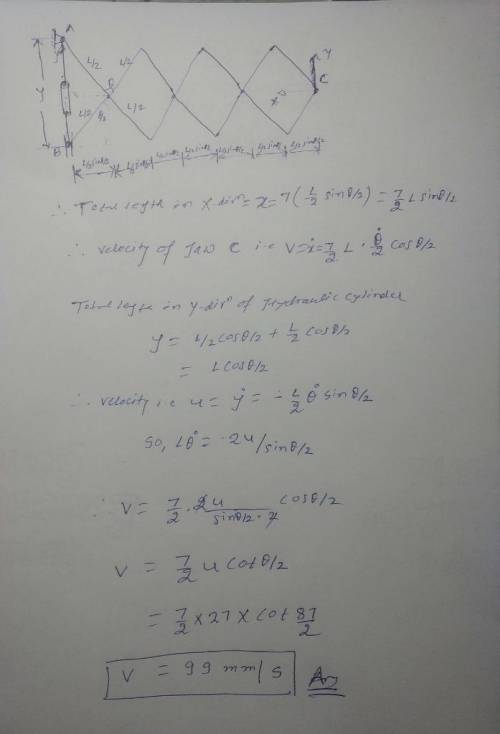
Engineering, 31.03.2020 01:04 dval1146
The linear actuator is designed for rapid horizontal velocity v of jaw C for a slow change in the distance between A and B. If the hydraulic cylinder decreases this distance at the rate u = 28 mm/s, determine the horizontal velocity of jaw C when the angle θ = 49°. The length L = 540 mm.

Answers: 3


Other questions on the subject: Engineering


Engineering, 04.07.2019 19:20, rida10309
At steady state, air at 200 kpa, 325 k, and mass flow rate of 0.5 kg/s enters an insulated duct having differing inlet and exit cross-sectional areas. the inlet cross-sectional area is 6 cm2. at the duct exit, the pressure of the air is 100 kpa and the velocity is 250 m/s. neglecting potential energy effects and modeling air as an 1.008 kj/kg k, determine ideal gas with constant cp = (a) the velocity of the air at the inlet, in m/s. (b) the temperature of the air at the exit, in k. (c) the exit cross-sectional area, in cm2
Answers: 2

Engineering, 06.07.2019 02:30, cofran
A75mm diameter shaft is supported in a journal bearing 75mm long with a diametral clearance of 0. 1mm. it supports a radial load of 1000 n and is lubricated with sae 50 oil at 70°c. find the friction torque and the power loss when the crankshaft rotates at 2900 rev/min.
Answers: 1
You know the right answer?
The linear actuator is designed for rapid horizontal velocity v of jaw C for a slow change in the di...
Questions in other subjects:


Mathematics, 03.12.2021 21:20


Mathematics, 03.12.2021 21:20

Physics, 03.12.2021 21:20

English, 03.12.2021 21:20



Spanish, 03.12.2021 21:20

Chemistry, 03.12.2021 21:20








